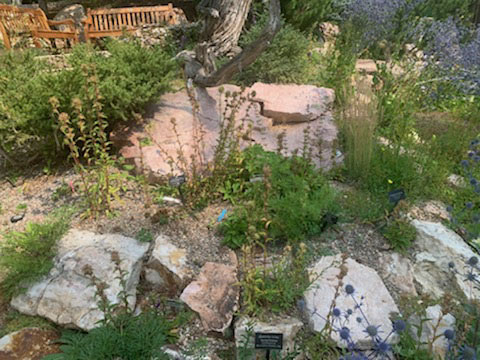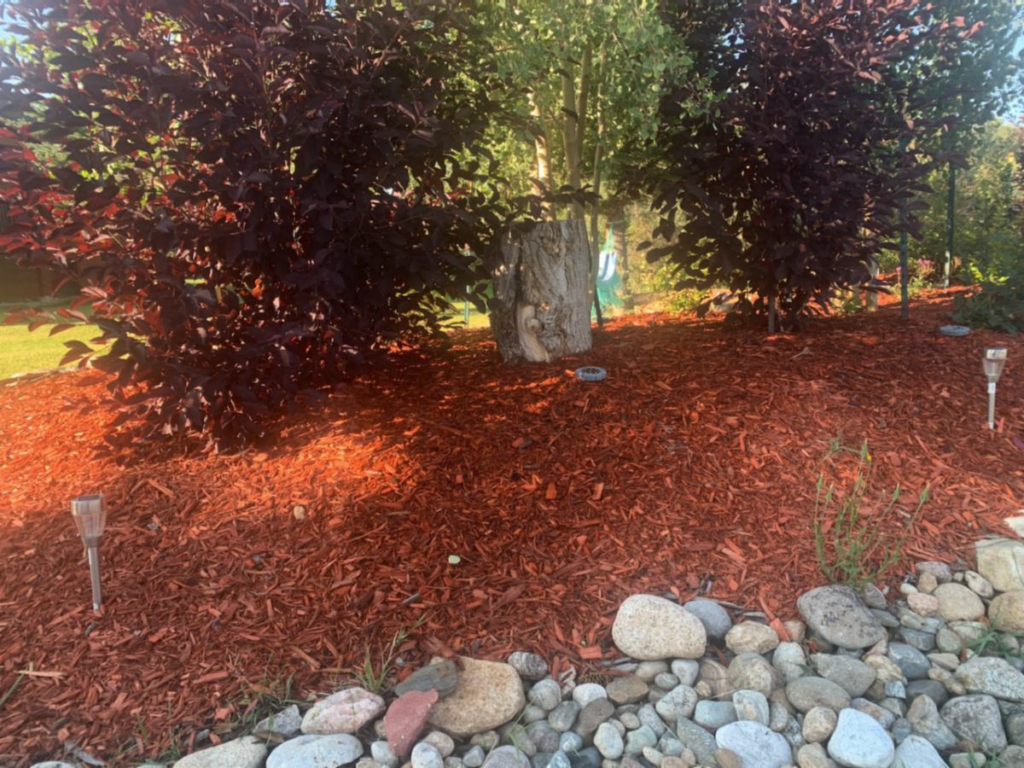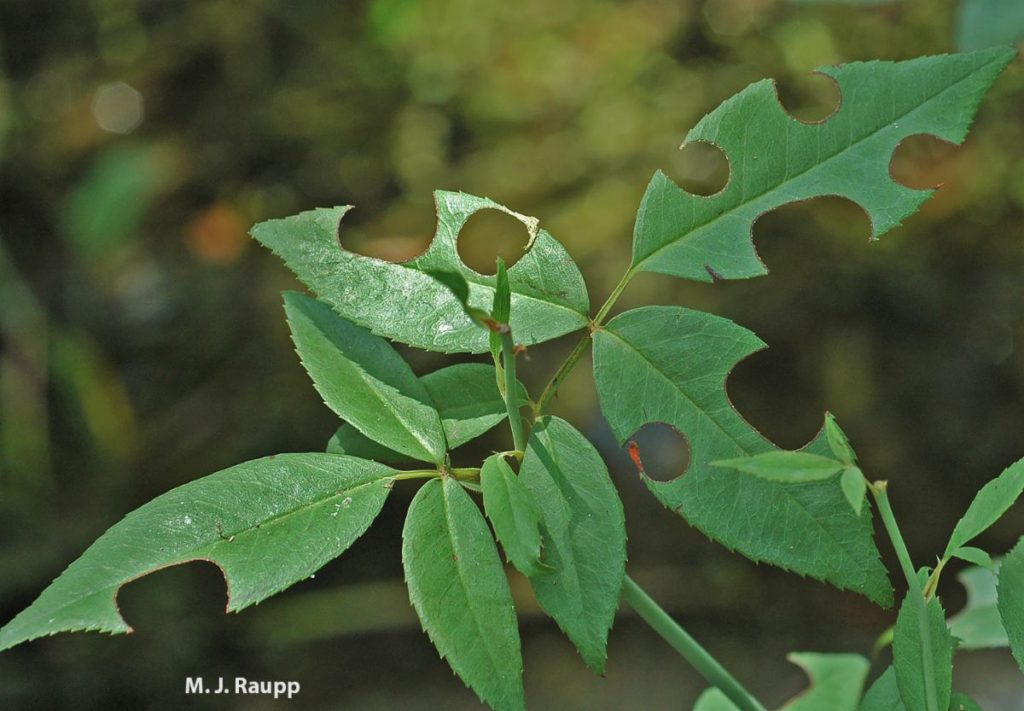By Deb Lebow Aal
I love being asked to look at people’s yards. I am not a professional landscaper, but I read gardening books like they’re novels, and from many years of gardening I know enough to give some advice. I frequently hear garden myths that I am reluctant to rebut on the spot, but here I am going to – if not dispel some of these – at least highlight a side of these “truths” that may be detrimental to good, sustainable, gardening. I am NOT a scientist. This information is from sources I’ve read, permaculture and other courses I’ve taken, and my experience as a gardener.
Myth 1: Needles from Pine Trees Acidify Your Soil
No, they don’t. A common misconception is that since pine needles from pine trees are acidic, they will acidify your soil. Fresh pine needles taken directly from a tree are slightly acidic. However, they don’t stay that way. By the time pine needles drop off a tree, they are barely acidic, and after a few days on the ground, are not acidic at all. Scientists have looked under 50-year old pine trees, with fifty years of dropped pine needles, and the soil underneath the tree is not acidic. It turns out that adding pine needles to top-dress your soil is a good thing. They will help enrich your soil. I like them as mulch because they stay in place.
Myth 2: Always Deadhead Your Perennials
Once a plant’s blooms are past their prime, the plant directs its energy towards producing seed and fruit. Conventional advice is to deadhead – or remove spent blooms – so that the plant can direct its energy, instead, to producing more blooms, foliage, and roots. While it is true that deadheading some perennials will give you a second bloom, that is not always good advice. Leaving your spent blooms on your plants is good for wildlife, and, in my opinion, is very pretty and adds winter interest. If you always deadhead perennials, you are robbing birds and insects of important shelter and food. Also, letting seed fall to the ground encourages self-seeding which may be desirable. That said, cutting some perennials back in the spring as they start “waking up” can make the plant stronger and avoid legginess, but that is not the same as deadheading.
Myth 3: Wood Chip Mulch Takes Nitrogen Away from Your Soil/Plants
Well, yes and no. Wood has a high carbon to nitrogen ratio. So, for wood to decompose, it needs to take nitrogen from somewhere. The early stages of wood decomposition are aided by fungi, which add nitrogen to the wood by taking some from the top inches of soil. This is done above most plant roots, so it will not affect your plants, unless they are seedlings. Wood chips are not recommended for vegetable gardens for this reason. When bacteria enter the process, they pull nitrogen from the surface of the soil; again, this does not affect your plants. In the later stages of decomposition, wood chips actually add nitrogen to the soil.


So, really, the amount of nitrogen taken by fresh wood chips is negligible, and wood chips will not affect the amount of nitrogen in your soil. That said, many native plants will do better in a pea gravel as opposed to wood mulch, likely because pea gravel keeps their crowns dry, which most CO native plants like, and is closer to their natural habitat.
I will add that wood chip mulch that comes packaged in plastic bags, and/or dyed red or dark brown, should not be used. I am not sure what the dye does, but it can’t be good. Try to get your wood mulch from local tree services, who may give it to you free, or in bulk, so that you are not dealing with plastic bags.
Myth 4: Gravel Mulch is Too Hot (and Adds Heat to Urban Areas)
More on mulch. Yes, the heat-island effect is a real thing. Urban areas are often 5 to 10 degrees hotter than surrounding areas because of all the concrete, asphalt and buildings. Too much impervious surface and lack of green space is not a good thing. But, gravel mulch is not part of the problem. It is pervious, allowing water to percolate in, which is a good thing. In fact, while the top of the gravel mulch may be hot, underneath, the soil and roots of the plant stay cooler than they would in wood chip mulch, and it conserves soil moisture very well – better than you might expect! So, half-inch size crusher (sharp, not rounded pea gravel) gravel laid 2-3” deep is excellent mulch for Colorado native plants. In my yard, the plants in gravel mulch are doing better than the ones in wood mulch.
Myth 5: We Need Honeybees
Everyone loves honey, and it seems everyone wants honeybees. When we talk pollinators, it’s the number one thing people want to talk about – the plight of the honeybee. Yet, honeybees are not native to the US, and some research shows that they are out competing our native bees 1. Research also shows that our native bees are better pollinators than the non-native honeybee. So, instead of the honeybee hive you want to put in your backyard (unless you are actually marketing honey), let’s encourage the native bees. They tend to be solitary, and live in bare ground. They’re a lot easier actually to keep. Just leave some bare ground and plant the right plants.
Myth 6: We Need Landscape Fabric/Weed Cloth to Keep Down the Weeds
One of my pet peeves of the landscaping trade is the use of plastic or other landscape fabric/weed barrier cloth. It is an unsustainable practice that does not prevent weeds after about a year or two, and deprives the soil of beneficial processes. Let’s break it down. Soil is a living entity. It needs water and billions of tiny critters to be healthy. Putting any type of barrier down (aside from cardboard or newspaper, which breaks down over time) disrupts the natural cycles in the soil. And I know of zero projects where weed barrier has prevented weeds from sprouting. First, some of the harder perennial weeds to rid will eventually grow through the barrier. Second, many weeds will seed right on top of the barrier and their roots will become enmeshed in the fabric, making it much harder to get rid of them. Weed barrier is also a pain to cut into, if you are planting more plants. I’ve spent much of the past seven years digging out black plastic that somebody thought was a good idea in my yard. What I inherited was a weedy mess on top of the black plastic. Yikes. Just don’t use it! Properly applied mulch is a better option. The key to not using weed barrier is using the correct amount of mulch – not too deep and not too shallow. That will be the subject of an entire article, coming soon.
Myth 7: Holes in my Leaves Indicates a Problem
Not always. In fact, holes in your leaves probably mean you have leaf cutter bees and/or other small insects/pollinators. It is a healthy sign of biodiversity and life in your yard.
Myth 8: Leaves Need to be Bagged and Hauled Away
I think by now we all know to leave the leaves. Leaves are great mulch, provide shelter for overwintering insects, and it just seems a shame to put them in the trash.

Myth 9: Weeds Need to be Trashed
Unless they have flowered, I put my weeds right back into the landscape, as mulch (in wood mulch, not pea gravel). Many weeds are good nutrient accumulators, and will not harm your landscape. Dandelions, for example, are a calcium accumulator, so the leaves of the dandelion plant make good mulch. If you are practicing sustainable landscaping and making as little trash as possible, by all means put the non-flowering weeds into your landscape or your compost pile. That said, I do not put any part of bindweed back into my landscape or compost. I just don’t trust it. It’s one smart weed.
Myth 10: Xeriscape Means Rocks and Can’t be Pretty
You would think by now that we’ve gotten rid of this one, but no. I still hear it. Xeriscape does not mean just rocks (that’s zero-scaping!). It can be gorgeous, as evidenced by so many colorful native, xeric gardens. In a near future newsletter, we will be putting together a list of native gardens to see so that we can prove this is true!
Myth 11: I Need to Get Rid of the Aphids/Bugs
I think the myth here is that our landscapes need to be super neat. Nature is not super neat. Even aphids have a role in the ecosystem–e.g., the more aphids, the more ladybugs. If you leave the insect you do not like, or at least some of the insects you do not like, you will eventually get the insect that eats the insect you do not like. Except, unfortunately, for Japanese beetles. If you don’t like Japanese beetles, get rid of your lawn. A nice, clean lawn is where they lay their eggs.
I know there are many, many more myths. Would someone else like to follow up with Garden Myths part 2? Or is there something confusing to you about gardening with natives you would like clarified? As always, we welcome other viewpoints. Contact us at [email protected].
Curious to learn more about transforming your garden into a habitat with Colorado native wildflowers, grasses, shrubs, and trees? Check out our native gardening toolkit, register for an upcoming event, subscribe to our newsletter, and/or
become a member – if you’re not one already!
Article notes and other resources:
- There are many articles on this, but one good one is The Problem With Honeybees, by Alison McAfee, Scientific American, November 4, 2020. ↩︎
